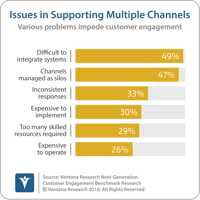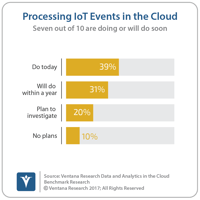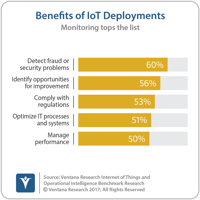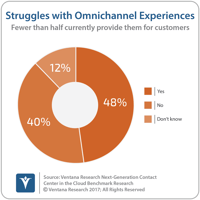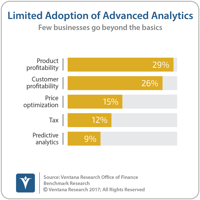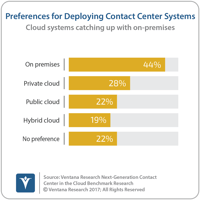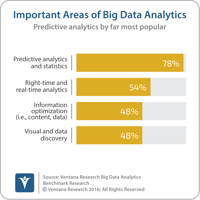Until recently, the contact center technology systems market was straightforward. Vendors typically provided on-premises systems that fell into four broad categories: telephony management, workforce optimization, business applications (most noticeably CRM) and analytics. The advent of more digital channels of engagement – the cloud, mobile devices, and artificial intelligence – has muddied the waters somewhat, making it harder to compare vendors. The cloud has had one of the most dramatic...
Read More
Topics:
Customer Analytics,
Customer Engagement,
Customer Experience,
Customer Service,
Contact Center
Cloudera provides database and enabling technology for the big data market and overall for data and information management. As my colleague David Menninger has written, the big data and information management technology markets are changing rapidly and require vendors to adapt to them. Cloudera has grown significantly over the last decade and now has approximately 1,000 customers and provides support and services in countries around the world. Its product and technology strategy is to provide a...
Read More
Topics:
Big Data,
Data Science,
Machine Learning,
business intelligence,
Analytics,
Cloud Computing,
Data Governance,
Data Integration,
Data Preparation,
Internet of Things,
Cognitive Computing,
Information Optimization,
Digital Technology
Business process reengineering was a consulting fashion in the early 1990s that spurred many companies to purchase their first ERP systems. BPR proposes a fundamental redesign of core business processes to achieve substantial improvements in market and customer responsiveness, productivity, cycle times and quality. ERP systems support business process reengineering by guiding the step-by-step execution of the redesigned process to ensure that it is performed consistently. They also automate the...
Read More
Topics:
Big Data,
Data Science,
Mobile,
Customer Analytics,
Customer Experience,
Machine Learning,
Office of Finance,
Wearable Computing,
Continuous Planning,
Analytics,
Business Intelligence,
Cloud Computing,
Data Integration,
Internet of Things,
Financial Performance Management,
Digital Technology,
Digital Marketing,
Digital Commerce,
Operations & Supply Chain,
Enterprise Resource Planning,
Machine Learning and Cognitive Computing,
ERP and Continuous Accounting,
Sales Planning and Analytics
In tracking NICE for a decade I have seen the company grow, through a series of acquisitions and product developments, from a vendor largely of workforce management systems to one that offers a full suite of workforce optimization products. It is now advancing what I call a customer experience platform that builds on top of my last coverage of it advancing its efforts. This includes systems to manage assisted channels of engagement (primarily the telephone), digital channels of engagement,...
Read More
Topics:
Big Data,
Customer Analytics,
Customer Engagement,
Customer Experience,
Mobile Technology,
Analytics,
Cloud Computing,
Collaboration,
Customer Service,
Contact Center,
CRM,
Digital Technology
I am happy to provide my personal perspective on the potential of sales organizations, processes and technology to supercharge business activity in 2017. The sales processes of organizations – whether they involve digital commerce or direct or indirect physical selling – should be part of continuous optimization efforts to reach maximum results. To do this, the people leading and running sales processes must be able to use technology that supports their responsibilities and analyzes the crucial...
Read More
Topics:
Big Data,
Sales,
Machine Learning,
Mobile Technology,
Office of Finance,
Analytics,
Cloud Computing,
Collaboration,
Product Information Management,
Sales Performance Management,
Digital Technology,
Digital Commerce,
Operations & Supply Chain,
Sales and Operations Planning,
Machine Learning and Cognitive Computing,
Sales Enablement and Execution,
Sales Planning and Analytics
More businesses are using software to implement and support a strategic pricing strategy designed to optimize revenue and margins in business-to-business (B2B) transactions because it can help improve results at the bottom line. “Optimize” in this instance means managing the trade-off that usually exists between revenue and profitability objectives in order to support a company’s strategy and capabilities in a given market. Business-to-business pricing management is Ventana Research’s term for...
Read More
Topics:
Big Data,
Data Science,
Sales,
Office of Finance,
Analytics,
Cloud Computing,
Sales Performance Management,
Financial Performance Management,
Price and Revenue Management,
Pricing and Promotion Management,
Sales Enablement and Execution,
ERP and Continuous Accounting
Workforce management is a key topic of expertise for Ventana Research. We define workforce management as the set of activities and processes organizations use to manage their hourly and salaried workforce for maximum productivity. It involves not only scheduling, tracking and paying for time worked but also aligning that work to the tasks and objectives of the organization. Workforce management is a critical component of every company’s operations, human resources and overall human capital...
Read More
Topics:
Human Capital Management,
Office of Finance,
Learning Management,
HRMS,
Workforce Management,
Work and Resource Management,
ERP and Continuous Accounting,
Payroll Optimization
Until recently most organizations deployed systems on their own premises to build communications and contact center infrastructures, which often required them to integrate products from several vendors. In the past few years many vendors have moved their systems to the cloud, and others have begun as cloud-based suppliers. This trend has opened up the opportunity for more organizations to take advantage of modern communication systems and contact centers. Using the cloud for either, or both can...
Read More
Topics:
Big Data,
Mobile,
Customer Analytics,
Customer Engagement,
Customer Experience,
Machine Learning,
Wearable Computing,
Analytics,
Business Intelligence,
Cloud Computing,
Collaboration,
Internet of Things,
Contact Center,
Digital Commerce,
Subscription Billing
The Internet of Things (IoT) is a technology that extends digital connectivity to devices and sensors in homes, businesses, vehicles and potentially almost anywhere. This advance enables virtually any device to transmit its data, to which analytics can then be applied to facilitate monitoring and a range of operational functions. IoT can deliver value in several ways. It can provide organizations with more complete data about their operations, which helps them improve efficiencies and so reduce...
Read More
Topics:
Big Data,
Wearable Computing,
Analytics,
Internet of Things,
Digital Technology
Human capital management (HCM) offers a prime opportunity for organizations and their human resource professionals to make employee-related processes effective in engaging and retaining the workforce. Manual administrative processes often hampered HR in focusing on the workplace experience and employee satisfaction. Modern HCM applications can help them manage members of the workforce as critical assets and make continuous investment in people-related processes, deriving insights on issue such...
Read More
Topics:
Human Capital Management,
Office of Finance,
Learning Management,
HRMS,
Workforce Management,
Work and Resource Management,
ERP and Continuous Accounting
Big data initially was characterized in terms of “the three V’s,” volume, velocity and variety. Nearly five years ago I wrote about the three V’s as a way to explain why new and different technologies were needed to deal with big data. Since then the industry has tackled many of the technical challenges associated with the three V’s. In 2017 I propose that we focus instead on a different letter, which includes these A’s: analytics, awareness, anticipation and action. I’ll explain why each is...
Read More
Topics:
Data Science,
Machine Learning,
Analytics,
Business Intelligence,
Collaboration,
Data Preparation,
Internet of Things,
Information Optimization
